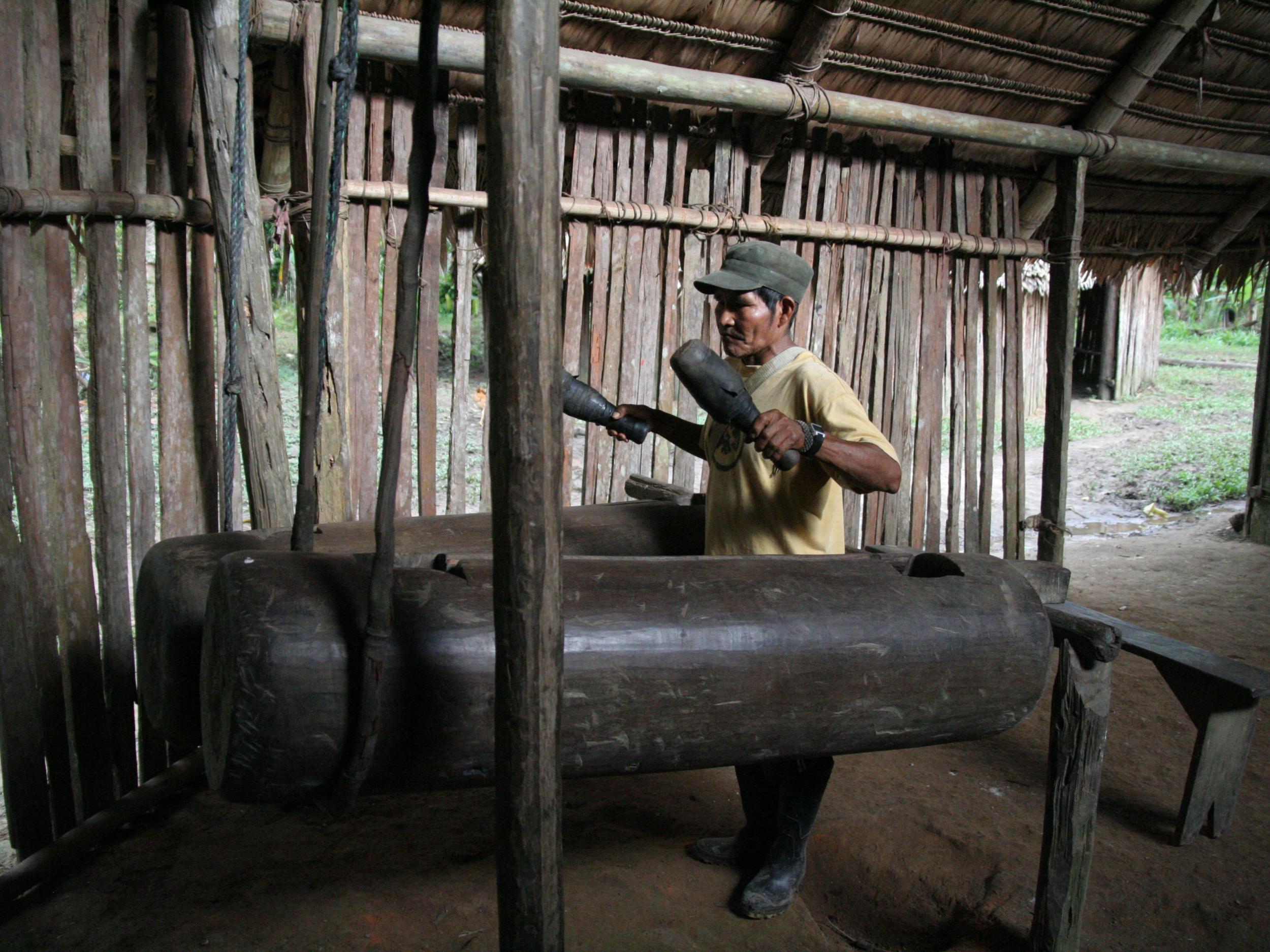Amazonian people use drumming language to communicate long distances
Bora tribe of Colombia and Peru mimic speech with traditional manguare drums to transmit information, new research reveals

Your support helps us to tell the story
From reproductive rights to climate change to Big Tech, The Independent is on the ground when the story is developing. Whether it's investigating the financials of Elon Musk's pro-Trump PAC or producing our latest documentary, 'The A Word', which shines a light on the American women fighting for reproductive rights, we know how important it is to parse out the facts from the messaging.
At such a critical moment in US history, we need reporters on the ground. Your donation allows us to keep sending journalists to speak to both sides of the story.
The Independent is trusted by Americans across the entire political spectrum. And unlike many other quality news outlets, we choose not to lock Americans out of our reporting and analysis with paywalls. We believe quality journalism should be available to everyone, paid for by those who can afford it.
Your support makes all the difference.An Amazonian tribe uses a language based on drumming that allows them to communicate with people up to 20km away.
In a new study, published in the journal Royal Society Open Science, researchers analysed this unusual mode of communication and found that it bears many of the hallmarks of spoken language, imitating the melody and rhythm of words and sentences.
The Boras are an indigenous group occupying the Peruvian and Colombian Amazon, currently comprising only around 1,500 people.
Manguare drums are a key element of Bora culture, used for communication both within and between communities.
Traditionally, every household would have owned a set, and every community member would have understood messages sent via the drums without explicit training.
However, the researchers noted that the Bora language’s days may be numbered in both its spoken and drummed forms.
Today, there are only around 20 manguare drums still in existence, and they are gradually falling out of use. At the same time, spoken Bora is gradually being replaced by Spanish.
Bora drummers can use their instruments either in the “musical mode”, which is used as part of rituals and festivals, or the “talking mode”, which is used to transmit informal messages and public announcements.
Sources suggest manguare drums can be used to communicate virtually anything, and messages can be transmitted from house to house in order to pass on information far and wide.
“For example, the manguare is used to ask someone to bring something or to come do something, to announce the outcome of non-alcoholic drinking competitions or the arrival of visitors,” said Dr Frank Seifart, a linguist at the University of Amsterdam.
“In this model, only two pitches are used, and each beat corresponds to a syllable of a corresponding phrase of spoken Bora.
“The announcements contain on average 15 words and 60 drum beats.”
While working at the Max Planck Institute for Evolutionary Anthropology, Dr Seifart and his colleagues analysed recordings of manguare drumming and spoken Bora collected as part of a project documenting Bora linguistic and cultural heritage.
They then compared spoken and drummed messages made by the same individuals in order to understand the linguistic structure of drummed Bora, and how it related to the spoken version.
Their analysis confirmed that drumming mimicked the tone and rhythm of Bora speech.
“Rhythm turns out to be crucial for distinguishing words in drummed Bora,” said Dr Seifart.
“There are four rhythmic units encoded in the length of pauses between beats. These units correspond to vowel-to-vowel intervals with different numbers of consonants and vowel lengths.
“The two phonological tones represented in drummed speech encode only a few lexical contrasts. Rhythm therefore appears to crucially contribute to the intelligibility of drummed Bora.”
Similar drummed speech has been reported in other communities, as have languages based on whistling such as Silbo Gomero, a form of whistled Spanish used in the Canary Islands.
Join our commenting forum
Join thought-provoking conversations, follow other Independent readers and see their replies
Comments